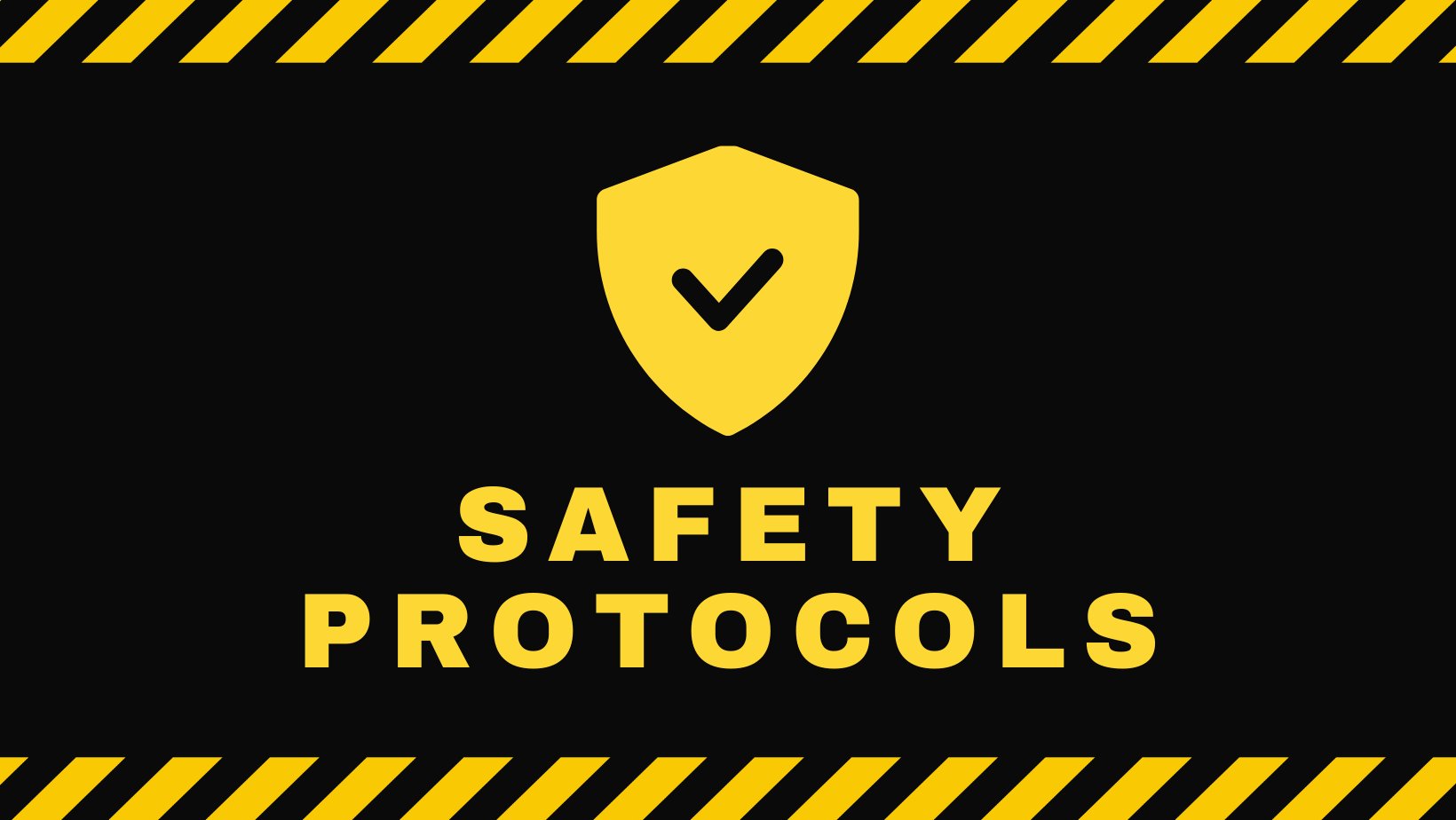Why Safety Protocols Fail: 8 Causes and Solutions
Safety measures are the bedrock of a healthy and productive work environment. They safeguard employees from accidents and injuries, preventing unnecessary suffering and financial hardship. These measures not only protect workers’ physical well-being but also contribute to a positive work culture where employees feel valued and supported. However, despite their undeniable importance, safety protocols can sometimes be neglected over time. This erosion of safety consciousness can have serious consequences.
This article delves into eight key reasons why safety measures may be ignored and offers potential solutions to ensure their continued effectiveness. We’ll explore factors like complacency, time pressure, and inadequate training, and discuss strategies to maintain a culture of safety in the workplace.
1. Essential Safety Protocols And Practices:
Safety protocols are essential for ensuring a safe and healthy work environment, protecting employees from potential hazards, and preventing accidents and injuries. These protocols encompass various measures such as hazard identification, provision of personal protective equipment (PPE), emergency procedures, safe work practices, training and education, workplace ergonomics, incident reporting and investigation, and regulatory adherence. They are managed by departments including Safety, Human Resources, Operations/Production, and Facilities Management.
To ensure their effectiveness, organizations must demonstrate leadership commitment, involve employees in protocol development, provide regular training and communication, continuously improve processes, and monitor adherence and effectiveness. By prioritizing safety protocols and creating a culture of safety, organizations can safeguard workers’ well-being and promote a productive work environment.
2. Complacency Due to Familiarity:
The repetitive nature of many workplace tasks can lull workers into a dangerous sense of complacency. When safety measures become routine, they can start to feel unnecessary. This fosters a “comfort trap” where workers may take shortcuts or disregard protocols altogether, believing their experience makes them invincible. A sobering 2021 report by the American Society of Safety Professionals (ASSP) revealed that a concerning 70% of experienced workers admitted to occasionally bypassing safety protocols due to feeling comfortable with the task.
The key to combating complacency lies in proactively disrupting the routine. Regular safety briefings and toolbox talks can keep safety procedures fresh in workers’ minds. Utilize visual aids like posters and checklists strategically placed in work zones to serve as constant prompts.
3. Time Pressure and Deadlines:
The relentless pressure to meet deadlines can sometimes create a conflict. In the rush to complete tasks on time, workers may be tempted to prioritize getting the job done quickly, even if it means sacrificing safety protocols. A 2023 survey by the Society for Human Resource Management (SHRM) found a worrying trend: 42% of employees reported feeling pressured to cut corners due to unrealistic deadlines. This pressure can lead to accidents and injuries.
For instance, imagine a construction worker facing a tight deadline to complete a critical building phase. Feeling the pressure, they might be tempted to skip wearing proper fall protection gear, risking a potentially fatal fall. To prevent such scenarios, fostering a work environment that prioritizes safety without compromising productivity is crucial. Open communication around deadlines and workloads allows for adjustments to maintain a safe work pace.
4. Insufficient Training and Education:
Insufficient training plays a significant role in the erosion of safety protocols. When workers lack a clear understanding of the “why” behind safety measures, they may be more likely to view them as arbitrary or unnecessary. This lack of knowledge can lead to confusion, improper application of procedures, and ultimately, increased risk of accidents. Studies support this connection. A 2020 report by the Occupational Safety and Health Administration (OSHA) revealed that a significant portion of workplace violations stemmed from a lack of training on specific safety protocols.
Comprehensive safety training tailored to specific job roles and tasks is crucial. Understanding the potential hazards associated with their tasks and the proper use of safety equipment empowers workers to make informed decisions and prioritize their safety. Regularly scheduled refresher courses ensure that knowledge remains current, especially as procedures or technology evolve.
5. Poor Safety Culture and Leadership:
Effective leadership is the backbone of a strong safety culture. Leaders set the tone by actively participating in safety initiatives and prioritizing safety discussions. They empower employees by encouraging open communication about safety concerns. Consistent enforcement of safety protocols and fair consequences for violations ensure accountability. Investing in comprehensive safety training equips workers with a safe work environment.
Through these actions, leaders foster a culture where everyone feels responsible for safety, making it a shared value, not just a requirement. Research from the Harvard Business Review in 2022 found that organizations with robust safety leadership experienced 49% fewer recordable incidents. Leaders must actively demonstrate their commitment to safety through participation in safety initiatives, open communication, and provision of necessary resources.
6. Normalizing Deviations from Safety Protocols:
When safety violations are ignored or go unaddressed, a dangerous norm can take root. Workers may begin to perceive these deviations as acceptable shortcuts, especially if they see colleagues engaging in similar behavior without consequence. This normalization of non-adherence erodes the overall safety culture and increases the risk of accidents.
A 2021 report by the National Institute for Occupational Safety and Health (NIOSH) highlighted a correlation between unaddressed safety violations and repeat accidents. To combat this, establish a clear and consistent approach to addressing safety violations, conduct thorough investigations, and implement corrective actions to deter future occurrences.
7. Failure to Adapt to Changing Work Environments:
Just as the workplace evolves with new technologies and work styles, safety measures need to adapt as well. Regularly review protocols, incorporating employee feedback to ensure they remain relevant. Training for new risks equips workers to navigate a changing environment safely. Embracing adaptability keeps safety measures effective and protects workers in a dynamic workplace.
8. Lack of Reinforcement and Accountability:
Consistent reinforcement and clear accountability are the cornerstones of an effective safety culture. Employees who don’t perceive consequences for skipping safety measures are more likely to fall into habits of negligence. This is supported by research from the National Safety Council. A 2022 study found that organizations with strong safety cultures experience a staggering 60% fewer injuries and illnesses compared to those with weak cultures. To bridge this gap, regular monitoring of safety adherence is crucial. On the other hand, clear disciplinary actions for violations send a strong message that safety is a top priority.
Disasters like the Challenger explosion, Deepwater Horizon spill, and Rana Plaza collapse all stemmed from a similar issue: prioritizing production or deadlines over safety concerns. In each case, warnings or safety concerns were downplayed or ignored. A lack of clear accountability for following safety protocols and a focus on maintaining production or meeting deadlines appear to have been contributing factors. These incidents serve as stark reminders of the importance of a culture that prioritizes safety and enforces consequences for negligence.
Conclusion
Safety protocols are essential for maintaining a secure and healthy work environment. By understanding the reasons behind their erosion and implementing proactive solutions, organizations can ensure the continued effectiveness of safety measures, safeguarding the well-being of their workers and preventing accidents.
Related Posts

Workplace Safety Survey: What 500 U.S. Workers Revealed

Top Technologies Transforming Workplace Safety in 2025



